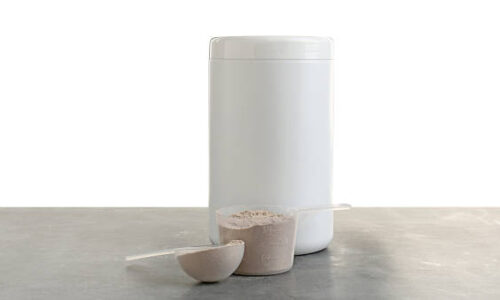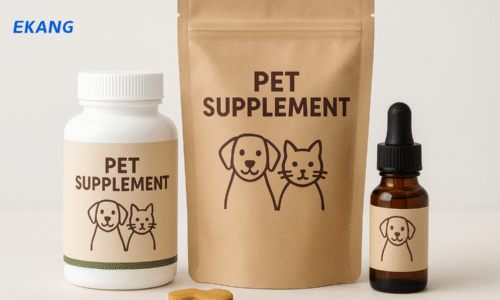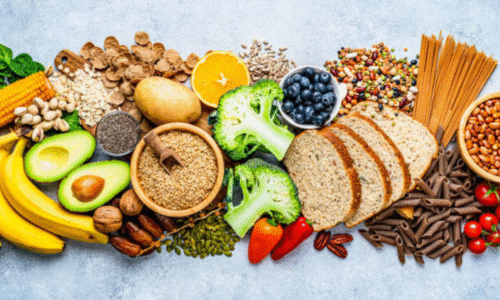
With the deepening of gut microbiome research in recent years, an emerging concept—postbiotics—has rapidly garnered significant attention from both the scientific community and the health industry.
According to the latest market analysis, the postbiotic market is projected to grow from US$146.7 million in 2025 to US$224.8 million in 2030, a compound annual growth rate of 8.9%.
These preparations, comprised of inanimate microorganisms and their components, are driving a wave of innovation in functional foods, beverages, and personal care products thanks to their exceptional stability, safety, and diverse health benefits.
What Are Postbiotics?
International Consensus & Definition
The concept of postbiotics has evolved through years of discussion and refinement. In 2021, the International Scientific Association for Probiotics and Prebiotics (ISAPP) convened a panel of 11 experts from 10 countries to establish a consensus definition:
“A preparation of inanimate microorganisms and/or their components that confers a health benefit on the host.”
This definition clarifies three key characteristics of postbiotics: non-viable microorganisms, containing microbial cells or their components, and demonstrable health benefits.
Postbiotics vs Probiotics vs Prebiotics
To better understand postbiotics, it’s essential to compare them with other microbiome:
| Feature | Postbiotics | Probiotics | Prebiotics |
| Definition | Non-viable microorganisms and/or their components with scientifically demonstrated health benefits | Live microorganisms that provide health benefits when administered in adequate amounts | Substrates selectively utilized by host microorganisms conferring a health benefit |
| Viable Cells | No – inactivated cells or their metabolites | Yes – must survive to colonize and function | Not applicable – non-living substrates |
| Stability & Storage | Room temperature stable; resistant to heat and pH variations | Requires refrigeration; sensitive to heat, stomach acid, and bile | Highly stable; unaffected by processing and storage conditions |
| Mechanism of Action | Directly influences host physiology through existing bioactive components; supports immune function and gut barrier | Colonizes gut and produces beneficial compounds; modulates microbiome composition | Serves as “food” for beneficial gut bacteria; stimulates growth of specific microorganisms |
| Key Advantages | Superior stability; broader safety profile; flexible formulation options | Direct colonization potential; established research history | Universal compatibility; enhances effectiveness of probiotics and postbiotics |
| Ideal For | Sensitive populations; products requiring thermal processing; markets with limited cold chain | Healthy individuals seeking microbiome modulation; those without immune concerns | General gut health maintenance; synergy with other microbiome supplements |
Prebiotics, in contrast, are substrates selectively utilized by host microorganisms conferring a health benefit—essentially the “food” for probiotics, while postbiotics represent the “legacy” or “products” of microorganisms.
Key Biological Mechanisms & Health Benefits
Metabolic Component Classification
- Postbiotics comprise diverse components, primarily falling into two categories:
- Microbial Metabolites: Substances produced by microorganisms during metabolism, including short-chain fatty acids, organic acids, vitamins, and small peptides
Inactivated Microorganisms: Non-viable microbial cells and their fragments, such as cell wall components and intracellular constituents
These include various bioactive substances like bacteriocins, enzymes, peptides, teichoic acids, muropeptides, polysaccharides, and bacterial outer membrane proteins.
Gut Barrier & Immune Regulation
Postbiotics exert their effects through multiple mechanisms, particularly notable in gut barrier and immune system regulation:
Immune Modulation: Postbiotics can regulate host immune responses by interacting with epithelial cells, dendritic cells, monocytes/macrophages, and lymphocytes.
For instance, intracellular extracts and supernatants from Faecalibacterium prausnitzii demonstrate anti-inflammatory effects by increasing anti-inflammatory IL-10 while reducing pro-inflammatory IL-12.
Enhanced Intestinal Barrier Function: Components such as lipoteichoic acid, surface layer proteins, short-chain fatty acids, and certain secreted proteins in postbiotic formulations play protective roles in maintaining gut barrier integrity.
Systemic Health Benefits
The benefits of postbiotics extend beyond the gut, demonstrating various systemic health effects:
Anti-inflammatory & Antioxidant: Postbiotics can chelate metal ions, generate antioxidant compounds, upregulate host antioxidant activity, and reduce reactive oxygen species enzyme activity
Metabolic Regulation: Studies indicate postbiotics possess biological activities including serum cholesterol reduction and anti-hypertensive effects
Skin Health: Applications of postbiotics in cosmetics and personal care products are increasingly demonstrating potential for skin health benefits
Why Postbiotics Are Trending in the Supplement Industry
The rise of postbiotics stems from evolving consumer awareness and their inherent, unparalleled advantages in both commercial and regulatory aspects.
Evolution in Consumer Awareness
Ongoing market education is shifting consumer perceptions. A growing number of people now understand that “live bacteria aren’t necessarily effective only when alive.” As the metabolic byproducts of microorganisms, the beneficial components of postbiotics can be directly absorbed and utilized by the body, bypassing the complexities and uncertainties associated with live bacterial colonization.
Regulatory Advantages
In major markets like the European Union and the United States (FDA), supplements containing live bacteria face stricter regulatory requirements. Postbiotics, being non-viable substances with defined composition and high stability, follow a clearer and simpler path to regulatory compliance and approval.
Commercial Advantages
- Excellent Stability: They are insensitive to high heat and humidity, significantly extending shelf life.
- No Cold Chain Required: This drastically reduces the cost and risk associated with warehousing and logistics.
- High Formulation Versatility: Due to their non-viable nature, postbiotics can be easily incorporated into moisture- and temperature-sensitive formats like gummies, powders, capsules, tablets, and even functional beverages, offering vast potential for product innovation.
For nutritional supplement brands seeking to understand the true value of what are postbiotics and hoping to offer customers products with significant benefits of postbiotic supplements, postbiotics are an excellent choice for achieving highly effective gut health and immune support.
Market Trends & Growth Forecast
Data is the most powerful language of a trend. Postbiotics are no longer a concept confined to academic papers; they are fueling a global consumer wave.
Soaring Search Interest: According to market analysis platforms, global search volume for “postbiotics” has surged by approximately 60% in the past two years, demonstrating strong proactive consumer curiosity.
Leading Brands Setting the Trend:
- Japan’s Kirin company has leveraged its accumulated fermentation technology expertise in postbiotic products, with its flagship oral health fermented Lactobacillus LS1 series achieving over 40% market growth.
- The pioneering U.S. science brand Seed Health launched its “Synbiotic + Postbiotic” tripartite formulation product, redefining the standard for next-generation gut supplements and garnering widespread market attention.
Consumer Profile: The core audience consists of sophisticated women seeking foundational immunity, precise skin health, and internal anti-inflammation, as well as young-to-middle-aged adults focused on daily health management.
How to Build a Successful Postbiotic Supplement
For brands planning to launch a postbiotic supplement, partnering with an experienced manufacturing partner is crucial to translating postbiotic science into market success.
Step 1: Ensuring Scientific Validity at the Source
- Select raw materials with a clear strain source, a stable fermentation process, and scientific backing.
- Ensure the supplier provides a detailed Certificate of Analysis (COA) and relevant efficacy study data.
Step 2: Defining Your Brand Through Dosage Form Innovation
- Incorporate postbiotics into convenient powders, delicious gummies, or high-efficacy capsules to meet different consumption scenarios and preferences.
- Forward-looking Strategy: Develop “Synbiotics” (combined formulations) that integrate probiotics, prebiotics, and postbiotics to offer a comprehensive gut health solution.
- Other Innovative Combinations: Pair postbiotics with other functional ingredients (such as Vitamin C, minerals, specific botanical extracts) to create differentiated products like “Postbiotics + Immunity” or “Postbiotics + Antioxidants.”
Step 3: Guaranteeing Quality with Precision Manufacturing
- Utilize low-temperature drying and microencapsulation technologies to protect the activity of functional components.
- Conduct rigorous stability testing to ensure the product maintains its efficacy and quality throughout the entire shelf life.
- Optimize production processes to guarantee batch-to-batch consistency and traceability, adhering to GMP (Good Manufacturing Practice) standards.
Step 4: Precision Positioning and Compliance First
- Market Differentiation: Clearly define the target consumer group and extract clear, easily understandable core efficacy claims based on scientific research data.
- Compliance Review: Ensure label statements, efficacy claims, and ingredient usage strictly comply with the regulations of the target market, avoiding exaggerated promotion.
- Brand Storytelling: Integrate the scientific principles of postbiotics, the uniqueness of the strain, and the expertise of the manufacturing partner into the brand story to build consumer trust and product authority.
Conclusion
Postbiotics represent the next generation of gut health supplements. They are stable, safe, versatile, and offer brands a historic opportunity to carve out a growth path beyond the competitive probiotic market, characterized by superior stability, reliability, and innovation.
Ready to Scale Your Supplement Business?
For over a decade, Ekang Nutra has served as a trusted Contract Development and Manufacturing Organization (CDMO) partner, helping numerous brands launch supplement products that are safe, effective, and highly favored by the market. We are eager to apply our expertise to ensure your success. Contact us today to discuss your project needs and receive a complimentary initial proposal.
FAQ About Postbiotics
Q1. What are postbiotics?
Non-viable substances from probiotics that provide direct health benefits, including SCFAs, functional proteins, enzymes, and polysaccharides.
Q2. Are postbiotic supplements safe?
- High safety profile & well-tolerated
- Non-viable → low risk for immunocompromised individuals
- Stable, long shelf life, minimal degradation
Q3. How are postbiotics made in supplement manufacturing?
- Strain selection & fermentation
- Metabolite generation
- Inactivation & purification
- Formulation (powders, capsules, gummies)
Q4. What benefits do postbiotics provide?
- Gut health support
- Immune system modulation
- Suppression of harmful bacteria
- Systemic benefits: skin, cardiovascular, mood, metabolic health









